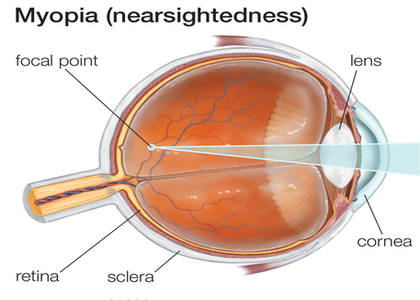- Home
- Editorial
- News
- Practice Guidelines
- Anesthesiology Guidelines
- Cancer Guidelines
- Cardiac Sciences Guidelines
- Critical Care Guidelines
- Dentistry Guidelines
- Dermatology Guidelines
- Diabetes and Endo Guidelines
- Diagnostics Guidelines
- ENT Guidelines
- Featured Practice Guidelines
- Gastroenterology Guidelines
- Geriatrics Guidelines
- Medicine Guidelines
- Nephrology Guidelines
- Neurosciences Guidelines
- Obs and Gynae Guidelines
- Ophthalmology Guidelines
- Orthopaedics Guidelines
- Paediatrics Guidelines
- Psychiatry Guidelines
- Pulmonology Guidelines
- Radiology Guidelines
- Surgery Guidelines
- Urology Guidelines
Increased UVB Exposure Associated with Reduced Risk of Nearsightedness In Teens, Young Adults: JAMA

Higher ultraviolet B (UVB) radiation exposure, directly related to time outdoors and sunlight exposure, was associated with reduced odds of myopia (nearsightedness), and exposure to UVB between ages 14 and 29 years was associated with the highest reduction in odds of adult myopia, according to a study published online by JAMA Ophthalmology.
Myopia is a complex trait influenced by numerous environmental and genetic factors and is becoming more common worldwide, most dramatically in urban Asia, but rises in prevalence have also been identified in the United States and Europe. This has major implications, both visually and financially, for the global burden from this potentially sight-threatening condition.
Astrid E. Fletcher, Ph.D., of the London School of Hygiene and Tropical Medicine, and colleagues examined the association of myopia with UVB radiation, serum vitamin D concentrations and vitamin D pathway genetic variants, adjusting for years in education. The study included a random sample of participants 65 years and older from 6 study centers from the European Eye Study. Of 4,187 participants, 4,166 attended an eye examination including refraction, gave a blood sample, and were interviewed by trained fieldworkers using a structured questionnaire. After exclusion for various factors, the final study group included 371 participants with myopia and 2,797 without.
The researchers found that an increase in UVB exposure at age 14 to 19 years and 20 to 39 years was associated with reduced odds of myopia; those in the highest tertile (group) of years of education had twice the odds of myopia. No independent associations between myopia and serum vitamin D3 concentrations or variants in genes associated with vitamin D metabolism were found. An unexpected finding was that the highest quintile (group) of plasma lutein concentrations was associated with reduced odds of myopia.
“The association between UVB, education, and myopia remained even after respective adjustment. This suggests that the high rate of myopia associated with educational attainment is not solely mediated by lack of time outdoors,” the authors write.
“As the protective effect of time spent outdoors is increasingly used in clinical interventions, a greater understanding of the mechanisms and life stages at which benefit is conferred is warranted.”

Disclaimer: This site is primarily intended for healthcare professionals. Any content/information on this website does not replace the advice of medical and/or health professionals and should not be construed as medical/diagnostic advice/endorsement or prescription. Use of this site is subject to our terms of use, privacy policy, advertisement policy. © 2020 Minerva Medical Treatment Pvt Ltd